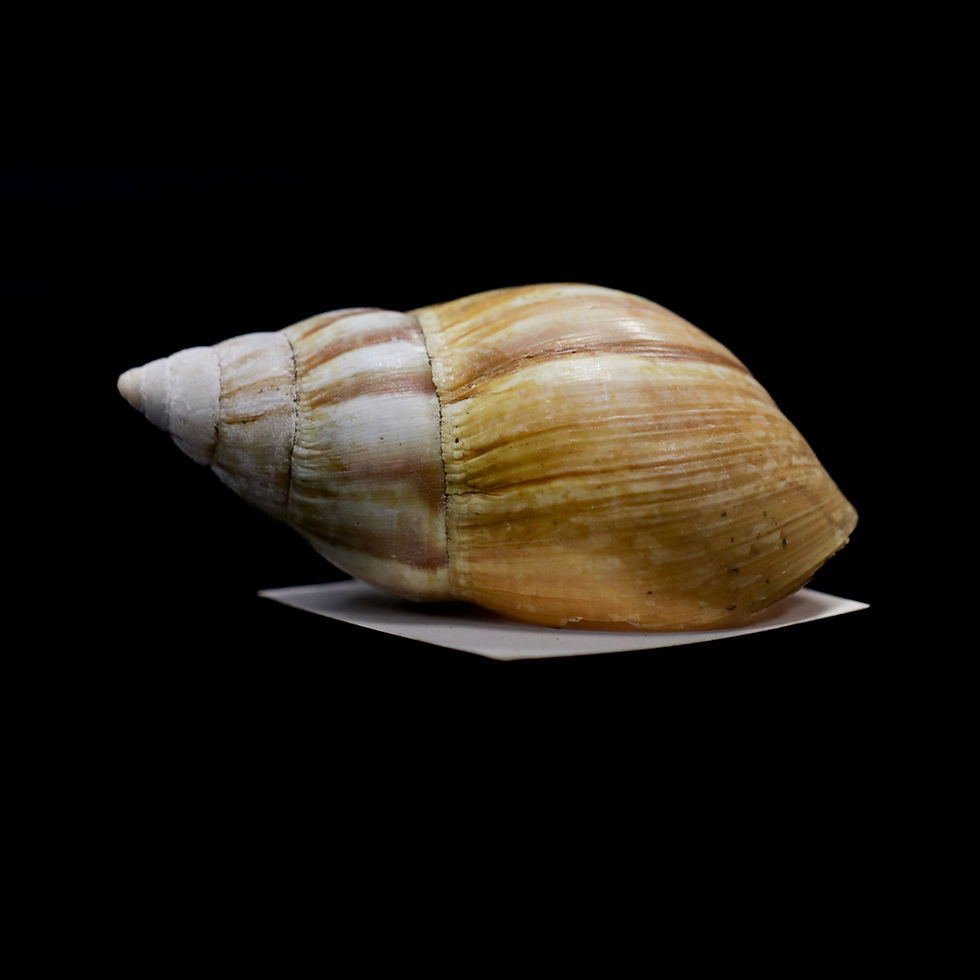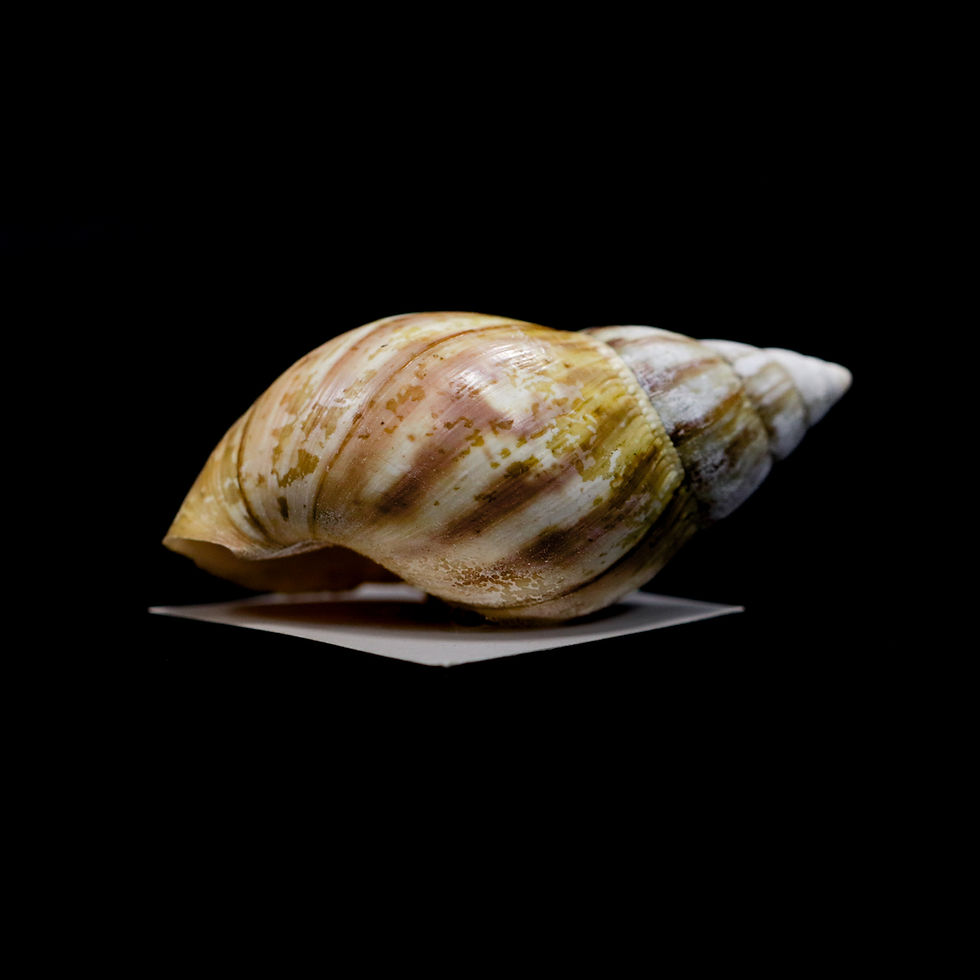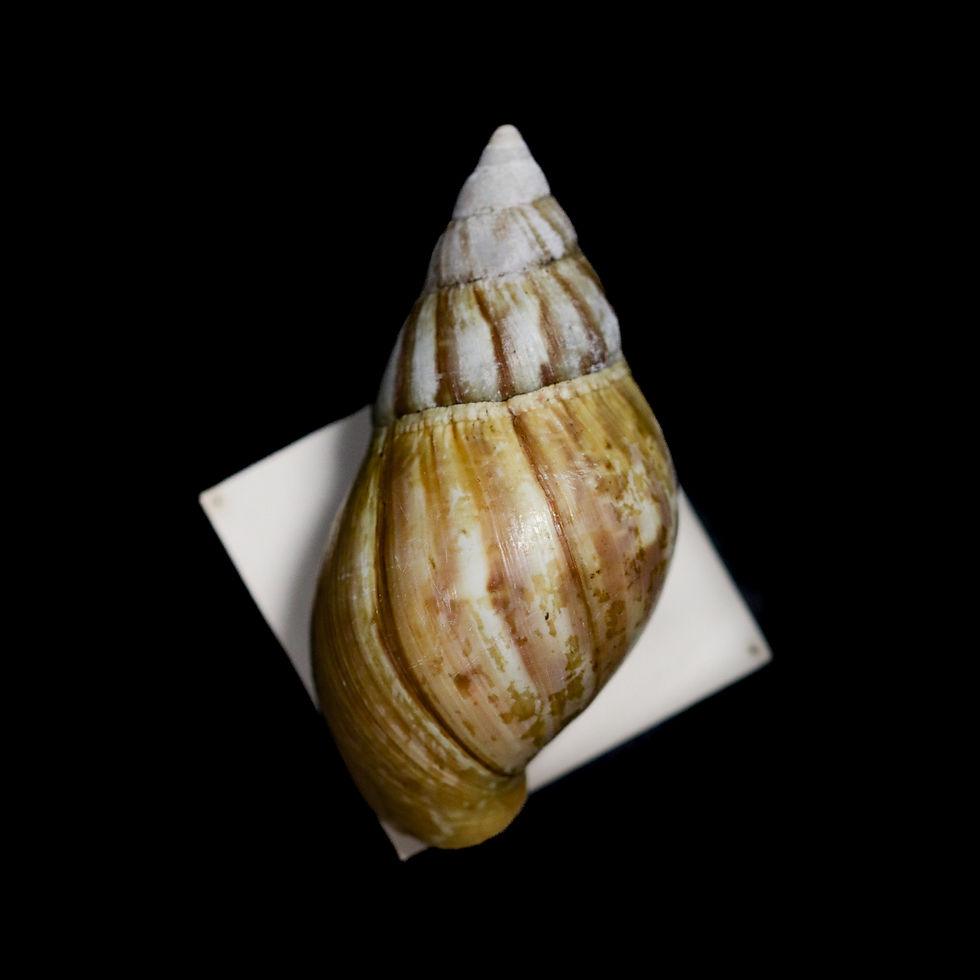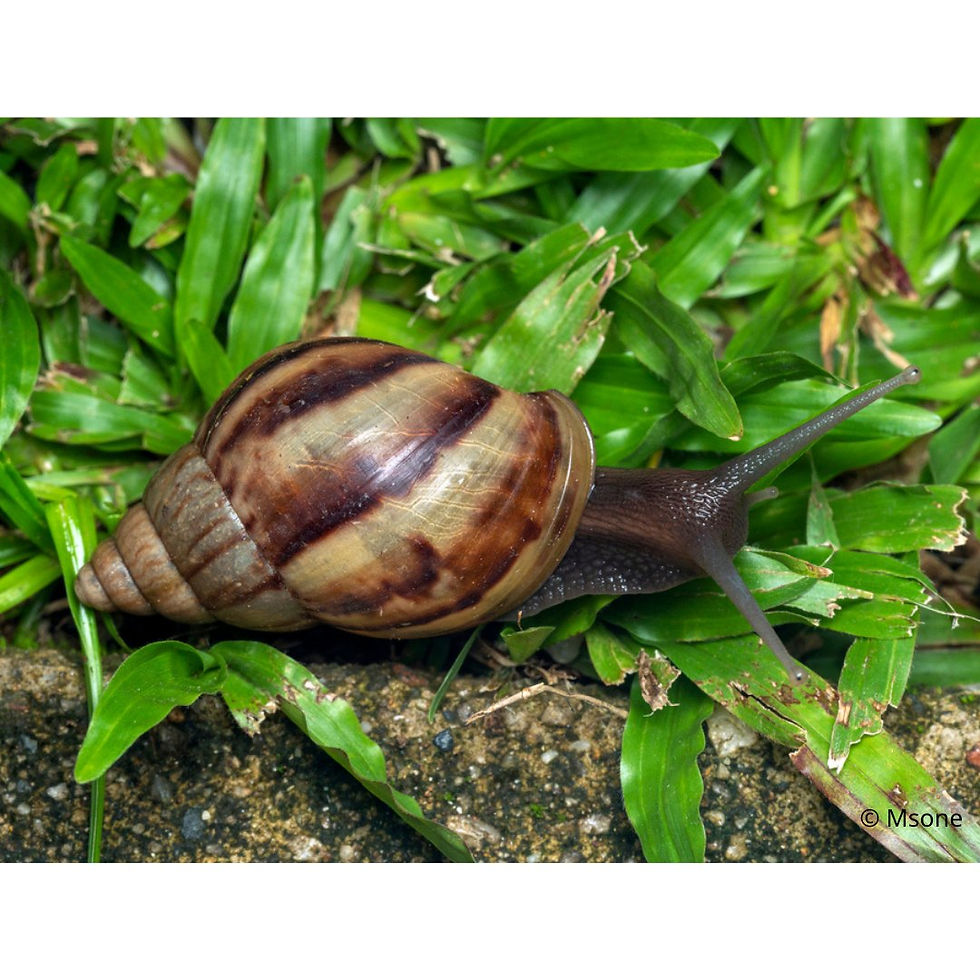Have you ever stepped on an animal accidentally? Our species today is one of the most innocent victims as it is inconspicuous.
The Giant African Snail, 𝘓𝘪𝘴𝘴𝘢𝘤𝘩𝘢𝘵𝘪𝘯𝘢 𝘧𝘶𝘭𝘪𝘤𝘢 (Bowdich, 1822) is a non-native species in Hong Kong. It originates from East Africa and was introduced to many tropical and warm temperate regions around the world by human dispersion. It is one of the largest land snails in the world, reaching up to 20 cm in shell length, with its conical shell as big as a human’s fist. This species is nocturnal (active at night) and favours humid weather. During scorching daytime, it generally buries itself beneath the ground or under leaf litter to hide from predators.


Don’t look down on 𝘓. 𝘧𝘶𝘭𝘪𝘤𝘢. It is highly adaptable and tolerable. In extremely hot or cold conditions, it will go through an aestivation state. Similar to hibernation in mammals, it will become sluggish by reducing metabolism in order to avoid dehydration. In addition, its diet is extremely polyphagous (able to feed on various kinds of food). On record, a wide range of food can suit its taste, including as many as 500 plant species, dead animals, dung, garbage as well as individuals of the same species! Even when deprived of food, it can survive for several months.

Just like many other land snails, 𝘓. 𝘧𝘶𝘭𝘪𝘤𝘢 is hermaphroditic. This means that no distinction between sexes really exists as each snail individual possesses both male and female reproductive organs. A juvenile can only produce sperm but after reaching full sexual maturity, both sperms and eggs are produced. However, it can not self-fertilize. In order to get fertilized, another mature adult is necessary for exchanging sperm. Interestingly, the exchanged sperm can be stored inside its body for up to two years rather than being used for immediate fertilization, allowing delayed reproduction.

All these characteristics make this species extremely adaptable and flexible to colonize new habitats and regions. As a result, 𝘓. 𝘧𝘶𝘭𝘪𝘤𝘢 is considered as one of the world’s 100 worst invasive species. The fast growth rate and the high survival skill exacerbate the population explosion of 𝘓. 𝘧𝘶𝘭𝘪𝘤𝘢. For instance, their invasion affected the Brazil and Hawaii regions. 𝘓. 𝘧𝘶𝘭𝘪𝘤𝘢 is a competitive predator which poses a great danger to terrestrial molluscs including the native slug species. It not only threatens local biodiversity and ecosystems of regions in which it is introduced, but also the local economy. Moreover, India has stated 𝘓. 𝘧𝘶𝘭𝘪𝘤𝘢 to be destructive to their agricultural and horticultural crops, with nearly 90 percent of cultivated plants as a potential food source for the giant snail. Without proper control, the situation will deteriorate.
Even a small slimy creature has many amazing facts but once introduced in a new region can turn into a living nightmare!
Text: Edmond Lee

Comments